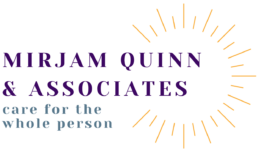In our culture, “independence” is often held up as the ultimate goal of successful parenting. We want to raise self-sufficient, resilient children who can handle anything the world throws at them. But in our quest for independence, are we accidentally teaching our children to be alone?
As parents, we are our children’s first teachers. But we don’t just teach with lessons; we teach with our lives. We all bring our “relational inheritance” into our parenting. History doesn’t repeat itself, but it certainly echoes. The internalized voices from our own past may tell us that needing help is a sign of weakness or that we must handle our stress on our own.
The problem is, our children are always watching.
Humans are not designed to be islands. We are wired for connection. We understand that other people actually become part of our sense of self; they are part of our fundamental psychological structure. A trusting relationship with a partner or a close friend helps regulate our own sense of self. This isn’t a flaw; it’s our natural instinct for connection.
When we hide this need from our children, we send a confusing message. Although a child needs at least one reliable and present adult, they also need to see that this adult also has a positive support system.
If a child constantly sees their parents unable to regulate or receive comfort, the child adapts. They may learn to suppress their emotions, fearing their emotional needs won’t be met. This is the root of insecure attachment. They learn that to be “strong,” you must shut down your feelings. When this happens, a child may learn to act out their feelings in other ways, such as through outbursts, to push others away. This can occur when the connection hasn’t been modeled as a reliable source of safety.
This is why we must actively model interdependence. When your child sees you, make a bid for connection — such as calling a friend when you’re sad or asking your partner for help when you’re overwhelmed — you are teaching them one of life’s most critical lessons. You are showing them that connections are rewarding and that community is a source of healing. This consistent modeling is what builds their future capacity to bond and trust that others can hold space for them.
True self-worth isn’t built on the idea that we never need anyone. It is built on trust. When we increase trust and safety in our relationships, our own sense of worth and stability increases.
So, let’s reframe the goal. The greatest gift we can give our children isn’t independence. It’s the “self-fulfilling proficiency” of healthy, mutual interdependence. The next time you’re having a hard day, let your child see you lean on someone. You’re not just getting the support you need; you’re giving them the blueprint for a connected and truly resilient life.


